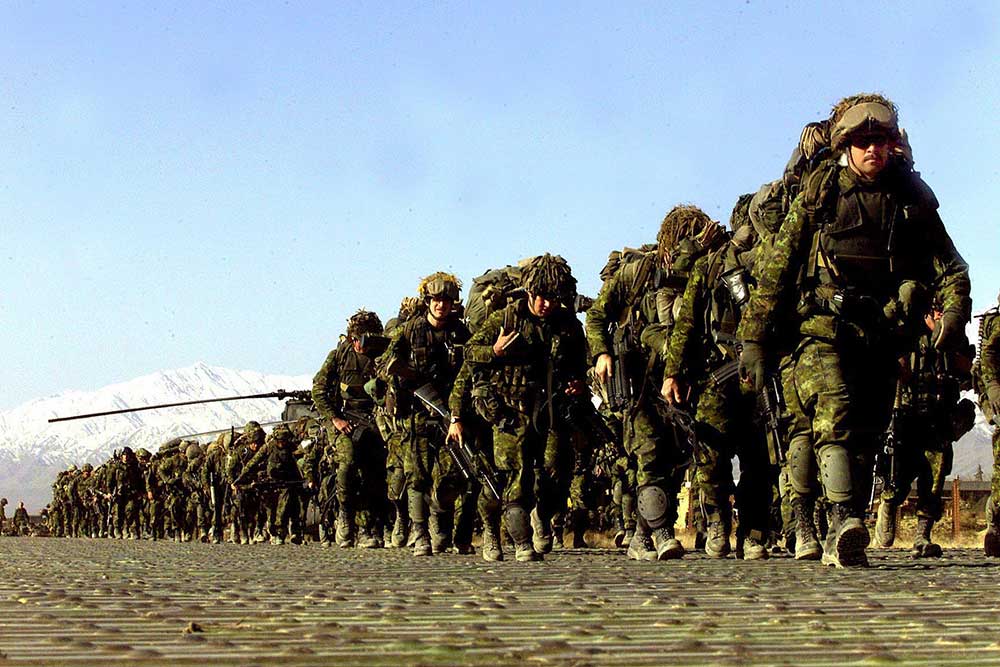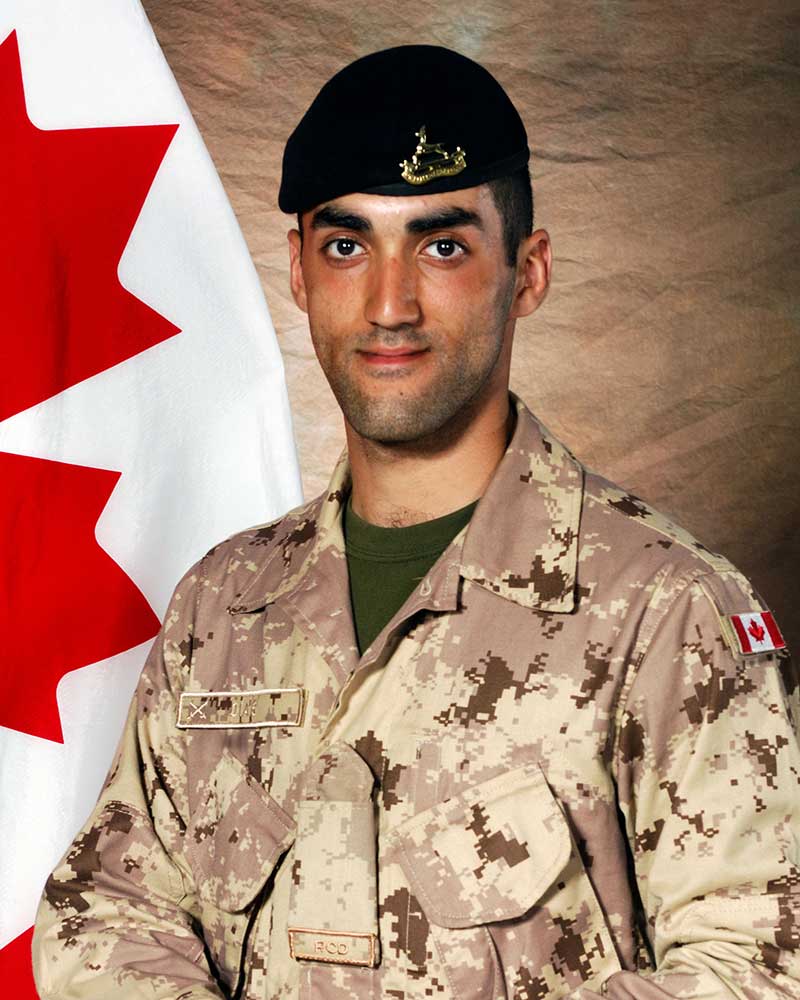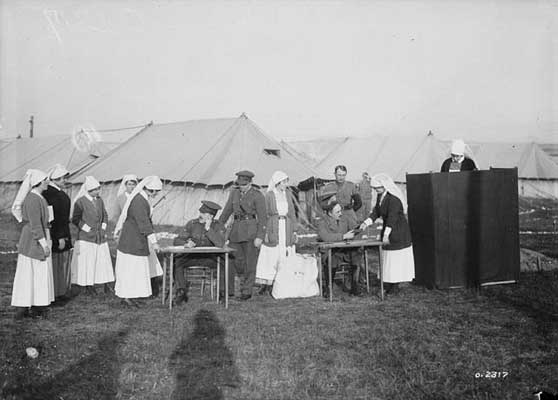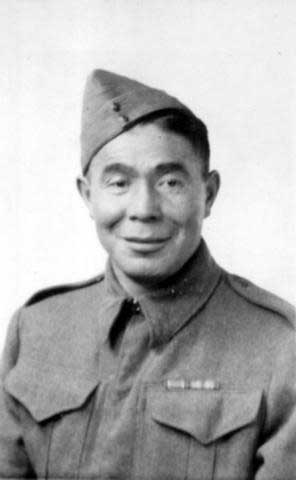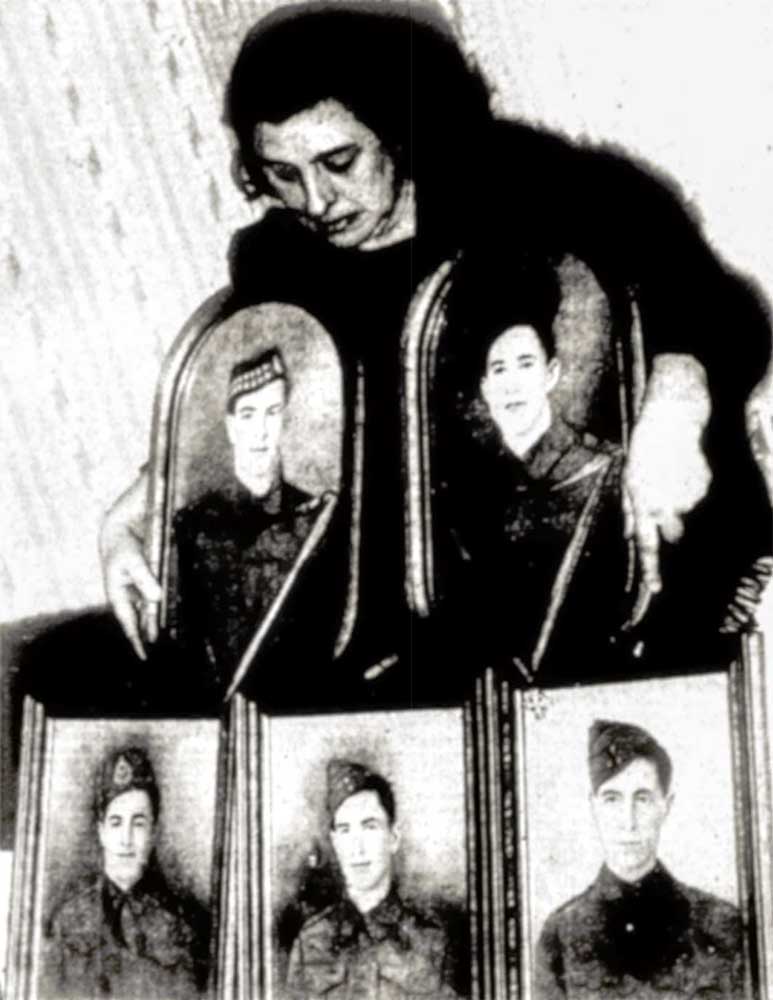Canada Remembers Times - 2017 Edition - Page 2
Boots on the ground in Afghanistan
Canadian soldiers in eastern Afghanistan in March 2002.
Photo: Department of National Defence APD02 5000-141
The first regular rotation of Canadian Armed Forces members deployed to Afghanistan in early 2002. Our brave men and women in uniform were sent to this war-torn country in southwest Asia as part of the international community’s response to the horrific terrorist attacks on the United States on September 11, 2001. Our country’s efforts there were our most significant overseas military mission in decades. A total of more than 40,000 Canadian Armed Forces members would serve in the Afghanistan theatre of operations over the years by the time the mission came to an end in March 2014.
Canada’s military played a variety of roles in Afghanistan, from active combat against the Taliban regime to national development and humanitarian efforts. Our service members also helped train the Afghan police and military forces to give them the tools to better protect the people of their own country.
The threat of violence was never far away when our men and women in uniform left the relative safety of their bases to go “outside of the wire.” The possibility of improvised explosive devices, suicide attacks and enemy ambush was very real and some 158 Canadian Armed Forces members sadly lost their lives during the Afghanistan mission. Many more came home with injuries to bodies and mind that they would have to live with for years to come. Their courage and sacrifice will never be forgotten.
A fallen hero
Trooper Marc Diab.
Photo: Department of National Defence
One of the courageous Canadian Armed Forces members who lost his life in Afghanistan was Trooper Marc Diab of the Royal Canadian Dragoons. He was killed northeast of Kandahar City on March 8, 2009, when an improvised explosive device blast hit the armoured vehicle in which he was traveling. Four other Canadian soldiers were also wounded in the attack. Diab was only 22 years old and was due to return home in just a few weeks. The avid photographer had taken thousands of pictures and short videos of his time overseas to share via social media.
Our country’s military reflects the richness of Canada’s diverse society today. Diab was born in Lebanon and immigrated to Ontario with his family as a young teenager where he would soon become active in his church and community. His loss hit his hometown hard and Trooper Marc Diab Memorial Park was unveiled in Mississauga in 2010. A film about his remarkable life called “If I Should Fall” was also released that year.
Canadians in the war-torn Balkans
Canadian soldiers on patrol in Bosnia-Herzegovina in 1999.
Photo: Department of National Defence
Tens of thousands of Canadian Armed Forces members served over the years in peace support missions in Croatia, Bosnia-Herzegovina, Serbia and Montenegro, as well as Macedonia—new nations that arose out of the ashes of the former Balkan country of Yugoslavia.
Large-scale peacekeeping efforts (initially known as the United Nations Protection Force, or UNPROFOR) began there 25 years ago this year in 1992. The situations that Canadian Armed Forces members encountered in the war-torn land wracked by ethnic hatred were unique. Our troops performed many roles, like monitoring fragile cease-fires and forcing open lines of supply to besieged areas in order to bring in humanitarian supplies to civilians. In the waters of the Adriatic Sea, our country deployed naval and air resources to assist the UN in its blockade of arms shipments to the region. Canadians also tried to protect areas of ethnic minorities, took part in air strikes to defend vulnerable groups, cleared mines and helped rebuild a shattered society.
Today, the active fighting is over but the recovery there continues. The last sizable Canadian Armed Forces presence left the region in 2004, but not before a total of 23 Canadians had lost their lives in the various missions in the Balkans. Many more of our men and women in uniform came home with injuries to body and mind whose effects continue to this day.
Bluebirds at the ballot box
Canadian Nursing sisters voting in Europe in 1917.
Photo: Library and Archives Canada PA-2279
In the early 1900s, Canadian women struggled to gain the right to vote. Women’s suffrage groups existed but the general view at the time was that giving women political equality would cause domestic strife.
During the First World War, it became harder to ignore this injustice. After all, women were also serving in the war as Nursing Sisters (nicknamed the “Bluebirds” because of their distinctive blue uniforms and white veils). On the home front, women were taking on new roles in factories and on farms, as well as holding their families together while the men were fighting overseas. They were also working in various organizations that supported the war effort such as the Red Cross. Women wanted and deserved to be fully active on the political front, as well.
One hundred years ago, finally some women were allowed to vote in the December 1917 federal election. The Military Voters Act gave the right to vote to women who were serving or had a relative in the military. Because of the time difference between France and Canada, the Nursing Sisters who were serving in Europe were actually the first women to cast their ballots. This was a major milestone for women gaining universal voting rights across the country.
A family tradition
Louis Arcand in uniform during the Second World War.
Photo: Muskeg Lake Cree Nation Archives MLCN-354-0080
Louis Arcand, a farmer from the Muskeg Lake Cree Nation in Saskatchewan, was born in 1897. He enlisted with the 232nd Battalion in 1916 and served during the First World War. Although he was wounded in August 1918, he decided to serve again during the Second World War. He joined the Veterans Guard, a special group of soldiers who had seen action during the previous war. These seasoned soldiers were tasked with protecting military targets across the country and guarding prisoners of war.
Louis was not the only one of his family to serve in war. Remarkably, he was followed by his ten sons, who all volunteered in the Armed Forces during the Second World War. Two sons, Clément and Patrick, even went on to serve in the Korean War with the Canadian Army Special Force. What a huge contribution by one family!
Dieppe hits families hard
Bernadette Rivait with photos of her sons who had served in uniform.
Photo: The Windsor Star 1942
It is difficult to imagine the stress felt by parents when their sons or daughters are serving in uniform during times of conflict. The news that something bad has happened to their loved ones is a message that families dread receiving. Imagine if the tragic news came not once, but multiple times. Sadly, during the First and Second World Wars, this was the experience of some families.
Just after the Dieppe Raid in France on August 19, 1942, Elizabeth Murphy received four separate telegrams in the span of a day that a son was missing in action. All four brothers were serving with the Essex Scottish Regiment from Windsor, Ontario—a unit which had been practically decimated at Dieppe.
Bernadette Rivait, another mother with sons in the same regiment, received similar news. Two of her five sons were killed in action at Dieppe and one was taken as a prisoner of war. Two years later, another tragic message came that a fourth son had been killed in the Netherlands. In her role as National Silver Cross Mother in 1964, Mrs. Rivait laid a wreath at the national Remembrance Day ceremony in Ottawa on behalf of all those who had lost children in military service.
Did you know?
Canadian teenagers too young to fight served in uniform during the South African War as buglers. These loud horns were used as a way to signal the soldiers to charge on a noisy battlefield. Douglas Williams of Toronto was one such boy bugler who, during the bloody Battle of Paardeberg on February 18, 1900, jumped atop an anthill and sounded the call to charge while bullets flew around him. Fortunately, he survived and would also serve again during the First World War.
- Date modified:
